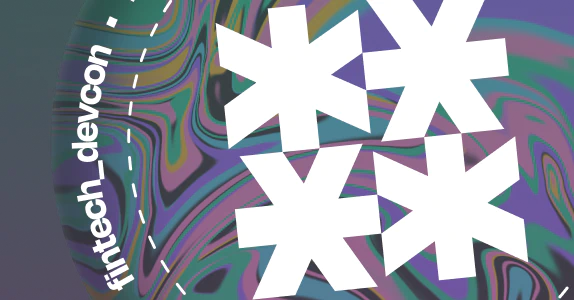
Lessons on building a challenger bank with Zach Bruhnke
We recently welcomed Zach Bruhnke the CEO/Janitor at HMBradley to be a speaker at our Moov weekly happy hour. Zach is a longtime member of the Moov community and fintech veteran. He spoke on a broad range of topics in the challenger bank space, and his ideas were so good we decided to write them up to share with the community.
We don’t record our happy hour calls, so if you’d like to be in on the next one join the Moov community to be the first to hear about them.
If you’re not already familiar, HMBradley is the best bank in the world if you’re a saver. Their claim to fame is that they reward you with better savings rates depending on the percentage of your income that you save, regardless of the dollar amount. As you’ll see in this post, however, there is a lot more to HMBradley than meets the eye. Being able to offer rates up to 3% APY on your savings is no easy feat, and in building a bank that can do this, Zach learned a lot about the challenger banking space he shared with the Moov community.
Go-to-market slower than you would with a traditional startup
When building HMBradley, Zach and his team spent a lot of time developing a deep relationship with their sponsor bank and tightening up their fraud protection systems. This effort was made easier by Zach’s deep experience in the space but was still a crucial part of their go-to-market strategy. The deeper relationship they have with their sponsor bank allows them to have more flexibility in the products they offer than your traditional challenger bank.
In addition to having more levers to pull on the product side than their competitors, they’re also more ready for fraud of all sizes. Many challenger banks don’t realize that bank fraud is not something you can “worry about later.” In the world of traditional startups running into production issues as you scale will at worst cause customer headaches and damage your brand. In banking, if you can’t handle fraud issues at scale, you’re out millions of dollars, and your sponsor bank may revoke your agreement, making you DOA.
For these reasons and more, taking your time to get the product right before going to market is a critical component of building a successful long-term business. Of course, this doesn’t mean that you can’t build hype around your product or shouldn’t test your messaging. The lesson to take is that banks don’t get made flippantly. If you’re going to take charge of your customer’s money, you need to take it seriously.
Hooks are not a differentiator
It’s all too common to see a challenger bank that launches with a slightly different offering than its competitors. According to Zach, challenger banks get fuzzy about who their target market is and how they will serve them. Just saying “Millenials” or “Gen Z” isn’t a targeted enough approach. Suppose you believe in the Zero to One approach to building a startup; you need to focus on a hyper-targeted demographic and ultimately dominate the market. From there, you can start to grow into adjacent markets.
Smartly, HMBradley is focusing on savers. Zach and his team have keyed in on the fact that most people in the United States get rich slowly. Living below their means, saving more than they make, and eventually, through the magic of compound interest, their money grows and makes them wealthy. By targeting people who save regardless of their income, HMBradley chose a valuable customer base that will only become more valuable over time. As the company grows and can offer more products, they will have loyal customers who can market those products to and who have great savings habits, meaning their loans are likely to perform even better than the market average.
Sure, offering a savings rate that increases based on how much you save could be seen as a hook. But it’s a hook geared towards a specific behavior. HMBradley offering a product that is appealing to the particular audience they want to attract is part of a larger business thesis, not a hook for pulling customers into a commodity product. What makes Zach’s company different is its desire to change the relationship between institution and customer completely.
Challengers have an opportunity to be a pro-privacy force
“The real opportunity for challenger banks is user experience,” Zach said towards the end of his talk. Of the recent banking experience, he continued, “I always like to say it’s as though you’re at dinner with your wife of ten years when she turns to you and says, ‘So what do you do for a living dear?” You can relate to anyone who has gotten a mortgage or applied for any financial product ever. Even at the same institution, you’re forced to repeatedly give all the same information, even if they technically know everything about you.
“The real opportunity for challenger banks is user experience” - Zach Bruhnke, CEO HMBradley
Our CEO Wade Arnold makes a definite point in defense of the banks on this. The systems most banks run on weren’t meant to be connected to the internet. Despite this, decades of building took place on top of these systems while connecting to the web. The enormity of the pressure on these systems to stay up and functional; is such that things like user profiles that persist across business lines are “nice to have” and not essential features. The relatively recent entrance of challenger banks is the only pressure banks have felt to innovate on the customer experience front.
Though many banks haven’t adjusted to modern technology, they have avoided one major issue that plagues many technology companies, trust. Customers trust banks to keep their money and data safe. It’s easy to see a glaring opportunity for challenger banks. Offer customers the ability to hold their two most valuable assets, money and data. HMBradley is just scratching the surface of this opportunity. By monitoring their customers’ spending and saving habits and rewarding them accordingly, they are building trust and ease of use that will carry them far. A few features of this relationship are already bearing fruit. They recently launched a credit product for their customers that is more than pre-approved, it’s fully allocated, and customers can instantly draw on it once offered.
Beyond financial products, though, think about OAuth. Would you instead log in to an app with your social media account or your HMBradley account? A social media companies’ sole purpose is to quantify you for advertisers. HMBradley’s mission is to help you save your money and keep it secure. I know who I’d choose. The concept that a bank can be more like an identity passport is exciting and something that most people in fintech (outside of the Fast team) haven’t considered.
The opportunity is just beginning
There is no shortage of new challenger banks appearing every day. Stop believing that all of them took the right opportunities. What Zach and the team at HMBradley are proving is that the field is still very green if you think differently.
Part of what we’re doing at Moov is creating more opportunities for both fintechs and banks to come up with ways to develop new and exciting customer experiences and products. If banks don’t have to spin up whole new departments to service fintechs, there will be more competition. If fintechs don’t have to spend an arm and a leg to use a reliable developer-first BaaS product, they can focus more on the user experience and less on raising money.
The best part about our happy hour with Zach was that he’s not a paying customer of Moov. However, the HMBradley team has contributed to Moov open source libraries and is planning on using some of them in the future. Zach is a financial technologist who has spent so much time wrestling with core banking systems that he wants to improve himself and others’ experience. We’re proud to have people like him in our community, helping build a more open platform.





